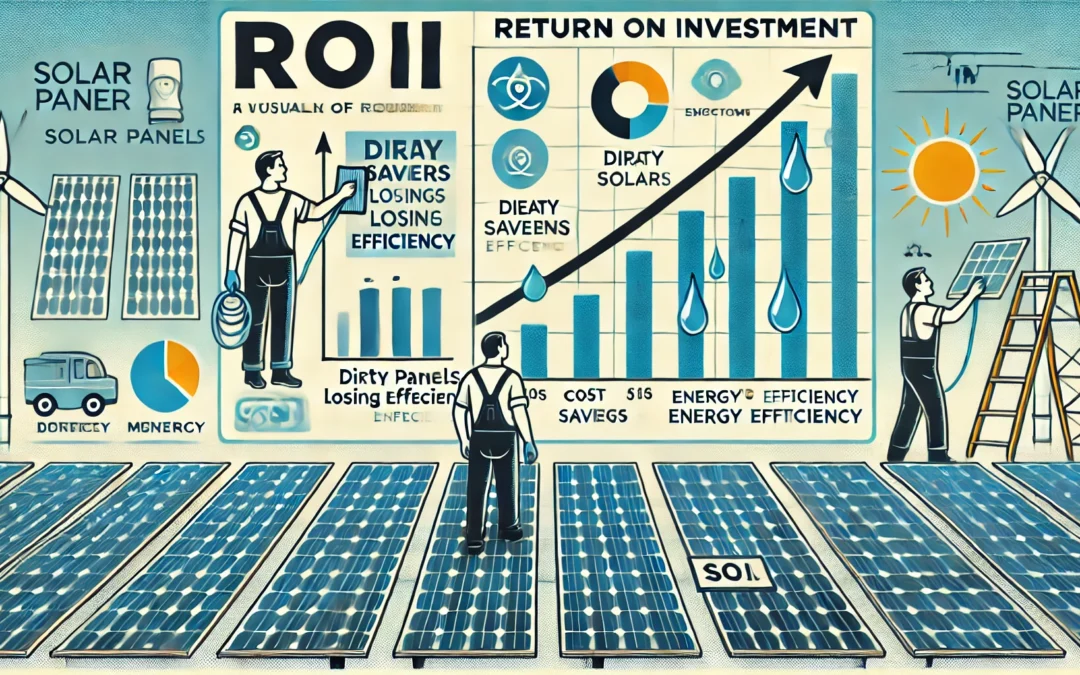Calculating the Return on Investment (ROI) for a solar panel cleaning system is essential for any solar energy user or facility manager aiming to maximize long-term energy output and financial returns. Over time, solar panels accumulate dust, dirt, bird droppings, and other environmental debris that can reduce their energy efficiency by 10% to 30%—especially in high-dust or industrial areas.
At SynergySolar, a leading solar panel company, we understand that even the best solar installations need regular maintenance to perform at peak levels. Investing in a professional or automated solar panel cleaning system not only restores lost energy production but also extends the life of your panels, ensuring better financial returns on your renewable energy investment.
By maintaining clean panel surfaces, a solar cleaning system helps recover lost efficiency and ensures consistent energy generation—resulting in higher savings and a faster payback period.
1. Calculate the Cost of the Solar Panel Cleaning System
Start by determining the total investment required for the solar panel cleaning system. This includes:
- Initial cost of the system: The cost of the cleaning equipment (manual, semi-automatic, or automatic).
- Installation Charges: If it’s an automated cleaning system, installation costs must be considered.
- Operational and maintenance costs: Include water, electricity, labor (if applicable), and routine maintenance.
Formula:
Total Investment Cost = Cleaning System Cost + Installation Cost + Annual Operational Costs
2. Estimate the Energy Loss Due to Dirty Panels
Determine the energy loss percentage caused by dirt accumulation. Solar panels typically lose between 10% to 25% efficiency depending on environmental conditions like dust, pollution, or bird droppings.
For example, if your panels lose 15% efficiency due to dirt, and you’re producing 10,000 kWh annually, your lost energy output would be:
Lost Energy = 10,000 kWh × 0.15 = 1,500 kWh/year
3. Estimate the Energy Gain After Cleaning
Once you install a cleaning system, you can expect to regain the lost energy. Calculate the additional energy generated due to maintaining clean panels.
Energy Gain After Cleaning = Lost Energy
4. Calculate the Monetary Value of Energy Gain
To convert the additional energy into financial savings, use the local electricity rate (typically expressed as the cost per kWh).
If the local rate is $0.10 per kWh:
Annual Savings = Energy Gain After Cleaning × Electricity Rate
Using the previous example:
Annual Savings = 1,500 kWh/year × 0.10 = 150 USD/year
5. Determine the Payback Period
The payback period is the time it will take for the savings from the cleaning system to cover the initial investment.
Payback Period = Total Investment Cost / Annual Savings
If your total cleaning system cost is $1,000, and you save $150 annually, the payback period would be:
Payback Period=1,000/150 = 6.67 years
6. Calculate ROI
ROI is calculated by comparing the net returns (total savings over a period minus the initial investment) to the initial investment.
ROI = Total Savings Over Period − Total Investment Cost / Total Investment Cost ×100
If you expect the cleaning system to last for 10 years, your total savings over that period would be:
Total Savings Over 10 Years = 150 USD/year × 10 = 1,500 USD
Thus, the ROI would be:
ROI = 1,500−1,000 / 1,000 × 100=50%
7. Additional Considerations
- Panel size and location: Larger solar installations in dusty or pollution-prone areas will see higher energy losses, which means more potential savings from regular cleaning.
- Cleaning frequency: The frequency of cleaning (monthly, quarterly, etc.) will influence both operational costs and the amount of energy regained.
- Degradation over time: Panels degrade naturally over time, but regular cleaning can help slow efficiency loss, which should be factored into long-term ROI calculations.

